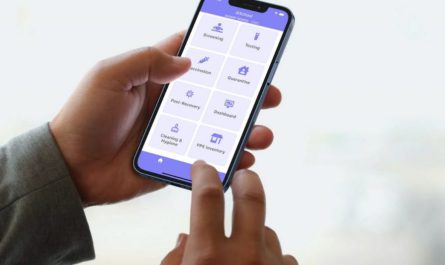National Developmental Disabilities Awareness Month
Disability is part of being human and is integral to the human experience. It results from the interaction between health conditions such as dementia, blindness, or spinal cord injury, and a range of environmental and personal factors. An estimated 1.3 billion people – or 16% of the global population – experience a significant disability today. This number is growing because of an increase in noncommunicable diseases and people living longer. Persons with disabilities are a diverse group, and factors such as sex, age, gender identity, sexual orientation, religion, race, ethnicity, and their economic situation affect their experiences in life and their health needs. Persons with disabilities die earlier, have poorer health, and experience more limitations in everyday functioning than others.
National Developmental Disabilities Awareness Month is recognized and celebrated each year during the month of March. In 1987. According to the Centers for Disease Control and Prevention, developmental disabilities are defined as impairments in physical, learning, language, or behavior areas, which include Autism spectrum disorders, Cerebral Palsy, attention-deficit/hyperactivity disorder, intellectual or learning disabilities, hearing loss, vision impairment, and other developmental delays.
While there has been a significant and positive change in the decades since many challenges remain for this vulnerable population. Parents, grandparents, early childhood education providers, and other caregivers can participate in developmental monitoring. The developmental screening takes a closer look at how your child is developing. The estimated one billion people living with disabilities worldwide face many barriers to inclusion in many key aspects of society. As a result, people with disabilities do not enjoy access to society on an equal basis with others, which includes areas of transportation, employment, and education as well as social and political participation.
Developmental screening is more formal than developmental monitoring. It is a regular part of some well-child visits even if there is no known concern.The Developmental Disabilities Assistance and Bill of Rights Act, which first originated in the early 1960s, authorizes the Developmental Disabilities Councils (systems change), Protection and Advocacy Systems (legal arm), and University Centers for Excellence in DD (research and training). The DD Act definition of developmental disabilities includes Autism and any other disability with an early onset that impacts three or more major life activities and is likely to continue indefinitely. These programs have had a significant impact on the Autism community.
Persons with disabilities experience ableism, stigma, and discrimination in all facets of life, which affects their physical and mental health. Laws and policies may deny them the right to make their own decisions and allow a range of harmful practices in the health sector, such as forced sterilization, involuntary admission and treatment, and even institutionalization.
Social determinants of health: Poverty, exclusion from education and employment, and poor living conditions all add to the risk of poor health and unmet healthcare needs among persons with disabilities. Gaps in formal social support mechanisms mean that persons with disabilities are reliant on support from family members to engage in health and community activities, which not only disadvantages them but also their caregivers (who are mostly women and girls).
Risk factors: Persons with disabilities are more likely to have risk factors for non-communicable diseases, such as smoking, poor diet, alcohol consumption, and a lack of physical activity. A key reason for this is that they are often left out of public health interventions.
Health system: Persons with disabilities face barriers in all aspects of the health system. For example, a lack of knowledge, negative attitudes and discriminatory practices among healthcare workers; inaccessible health facilities and information; and lack of information or data collection and analysis on disability, all contribute to health inequities faced by this group.
As community organizations and public health officials implement the recommendations found in the Community Guide, they may wish to consider removing the health barriers people with disabilities sometimes face when trying to use these programs. With the appropriate adaptations, people with disabilities are more able to benefit from the disease prevention and health promotion programs they need to stay active and healthy, and lead full lives.
There are several types of changes that health promotion and disease prevention programs —such as those within the Community Guide— can use to make sure people with disabilities are included, such as
Communication and technology changes, which include having accessible communication formats (for example, large print, braille, screen reader, and other alternative formats) and using images of people with disabilities to promote and provide examples of healthy behaviors among this population.
Customer services changes, including making sure program staff receive training about disability-related topics, such as disability awareness, customer service for people with disabilities, and understanding responsibilities concerning service animals.
Environmental changes to remove barriers—such as lack of accessible transportation, difficulty navigating the program site, lack of accessible equipment, and poor lighting—may prevent people with disabilities from fully participating in the programs.
Each year, the National Association of Councils on Developmental Disabilities (NACDD) holds a campaign for Developmental Disabilities Awareness Month to raise awareness about developmental disabilities, communicate the importance of inclusion, and share stories of individuals with disabilities. The NACDD wants to showcase the work being done to celebrate and improve the lives of individuals with developmental disabilities.




